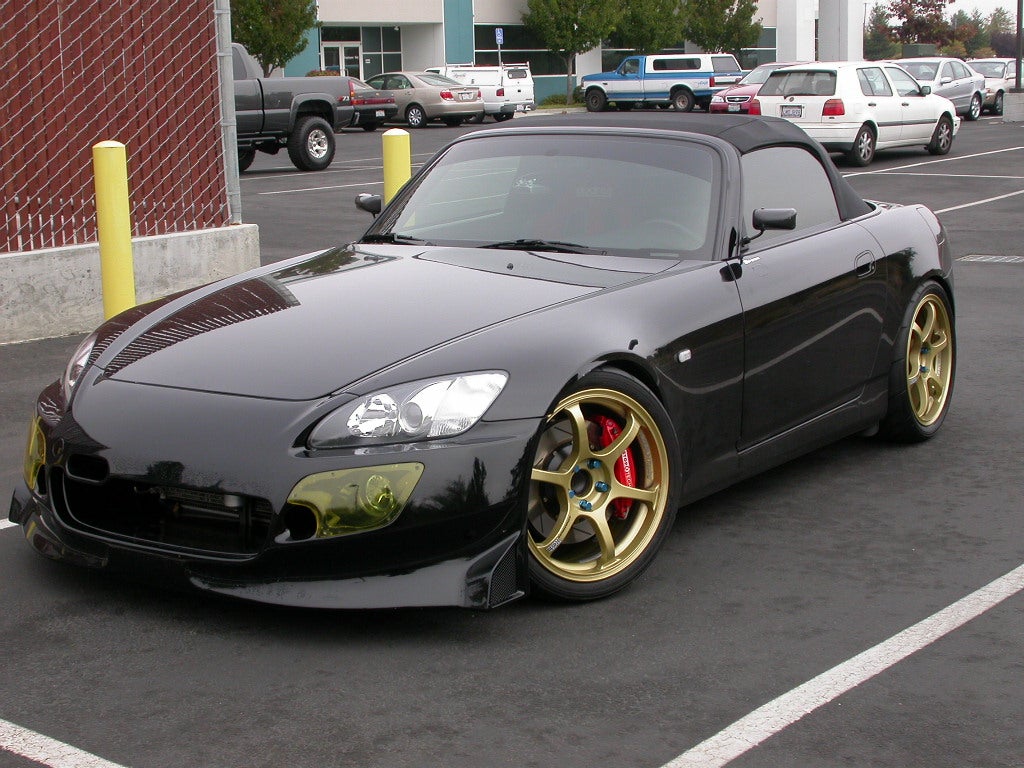Several revisions were made throughout the car's lifetime, including changes to the engine, gearbox, suspension and interior and exterior. Officially two variants exist: the initial launch model was given the chassis code AP1, while the AP2 designation was given to vehicles produced from mid-2003 onwards. Though cosmetically similar, the AP2 incorporated significant changes to the drivetrain and suspension. Production of the S2000 ceased in June 2009.
Contents
1 Honda SSM
2 Models
2.1 AP1
2.2 AP2
3 Specifications
4 Reviews and awards
5 Sales and production
6 References
7 External links
Honda SSM
X-bone frame (yellow) used in the construction of the S2000 chassis.
Introduced at the 1995 Tokyo Motor Show the Honda Sport Study Model concept car was the design study for the production S2000. The SSM was a rear wheel drive roadster powered by a 2.0 L (122 cu in) inline 4 cylinder engine. It featured a rigid X-bone frame which Honda claimed improved the vehicle's rigidity and collision safety. The hood was aluminium and the car had a 50:50 weight distribution.
The SSM would appear unchanged in many automotive shows for several years afterwards, hinting at the possibility of a production version. Honda later announced the production version of the SSM. Carrying on the tradition of the company's 1960s S500, S600, and S800 roadsters, the new vehicle was named the S2000.
Models
AP1
Honda S2000 (AP1)
Production 1999–2003
Assembly Takanezawa R&D Plant in Tochigi, Japan
The S2000 was introduced in 1999 for the 2000 model year and was given the chassis designation of AP1. It featured a front engine, rear-wheel drive layout with power being delivered by a 1,997 cc (122 cu in) F20C inline 4 cylinder DOHC-VTEC engine producing from 175 hp (130 kW) to 250 PS (184 kW), and from 153 lbf·ft (207 N·m) to 22.2 kg·m (218 N·m) of torque depending on the target market.[5] The engine is mated to a six-speed manual transmission and Torsen limited slip differential. The S2000 achieved what Honda claimed as the "top level performance in the world" for a 2-liter naturally aspirated engine.
2004 AP2 and 2000 AP1 model S2000s from above—the AP1 has OEM front lip, side strakes, and rear spoiler.
Features include independent double wishbone suspension, electrically-assisted steering and integrated roll hoops. 16 in (41 cm) wheels with Bridgestone Potenza S-02 tires were standard equipment. The compact and lightweight engine, mounted entirely behind the front axle, allows the S2000 to obtain a 50:50 front/rear weight distribution and lower rotational inertia. An electrically powered vinyl top with internal cloth lining was standard. Honda made available an aluminum hardtop for additional cost.
The 2001 model was largely unchanged, but Honda upgraded the radio and added a digital clock to the dashboard display. For the 2002 model year, suspension settings were revised and the plastic rear window was replaced by a glass unit incorporating an electric defroster. Other updates included slightly revised tail lamps, an upgraded radio, and a revised engine control unit.
The AP1 was manufactured up to 2003 at Honda's Takanezawa plant, alongside the Honda NSX and Honda Insight hybrid. In 2004 production moved to the Suzuka plant.
Honda S2000 (AP2
Production 2004–2009
Assembly Suzuka R&D Plant in Suzuka, Mie, Japan
The 2004 model year incorporated several revisions to the S2000 and was given the chassis designation of AP2. The 2004 model introduced newly designed 17 in (43 cm) wheels and Bridgestone RE-050 tires along with a retuned suspension to reduce oversteer. The spring rates and shock absorber damping were altered and the suspension geometry modified to improve stability by reducing toe-in changes under cornering loads. In the gearbox the brass synchronizers were replaced with carbon fiber. In addition, cosmetic changes were made to the exterior with new front and rear bumpers, revised headlight assemblies, new LED tail-lights, and oval-tipped exhausts.
 Honda S2000
Honda S2000 Honda S2000
Honda S2000 Honda S2000
Honda S2000 Honda S2000
Honda S2000Honda S2000
 Honda S2000
Honda S2000 Honda S2000
Honda S2000 Honda S2000
Honda S2000 Honda S2000
Honda S2000 Honda S2000
Honda S2000 Honda S2000
Honda S2000 Honda S2000
Honda S2000 Honda S2000
Honda S2000 Honda S2000
Honda S2000



